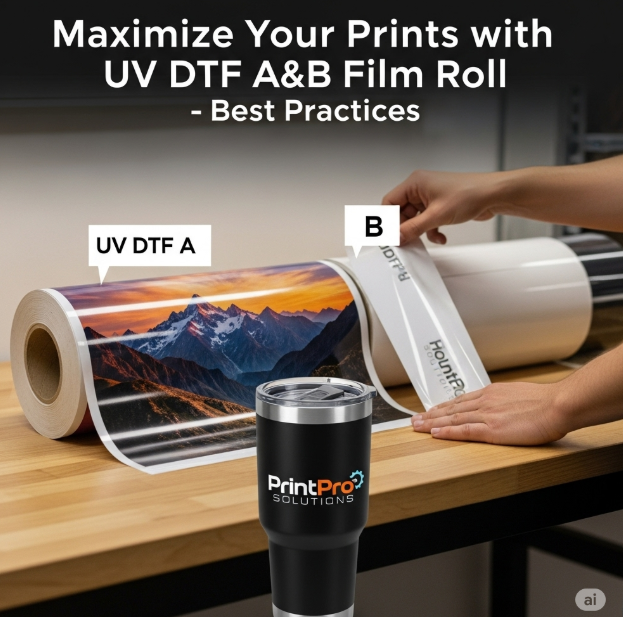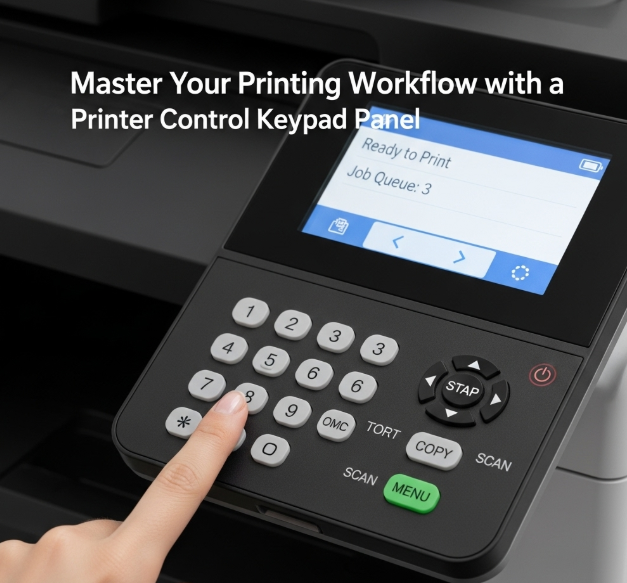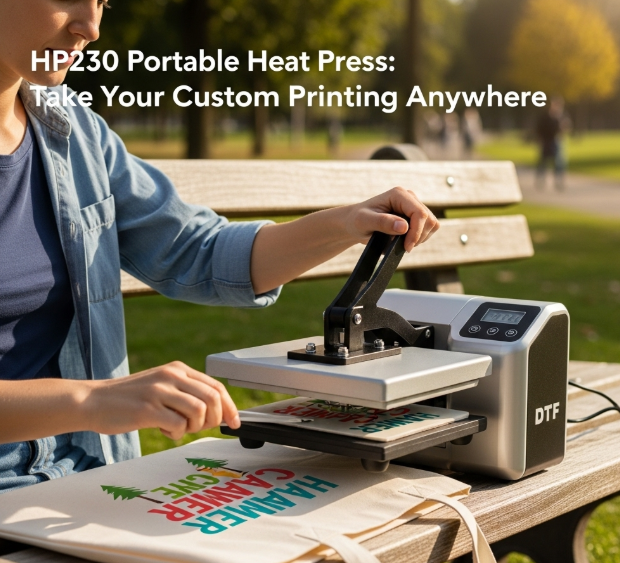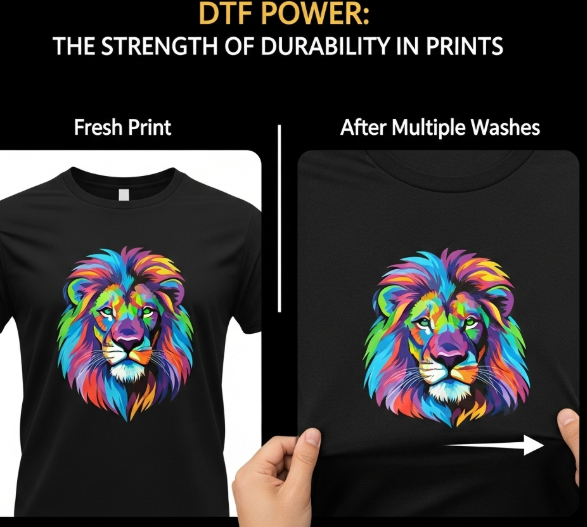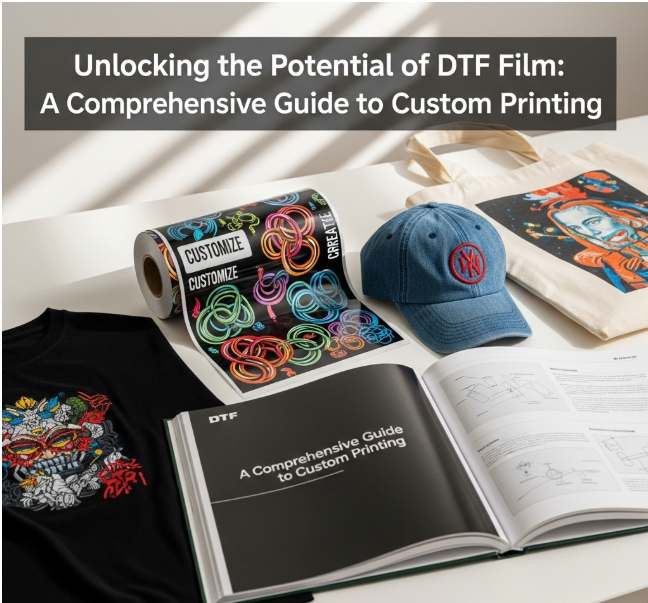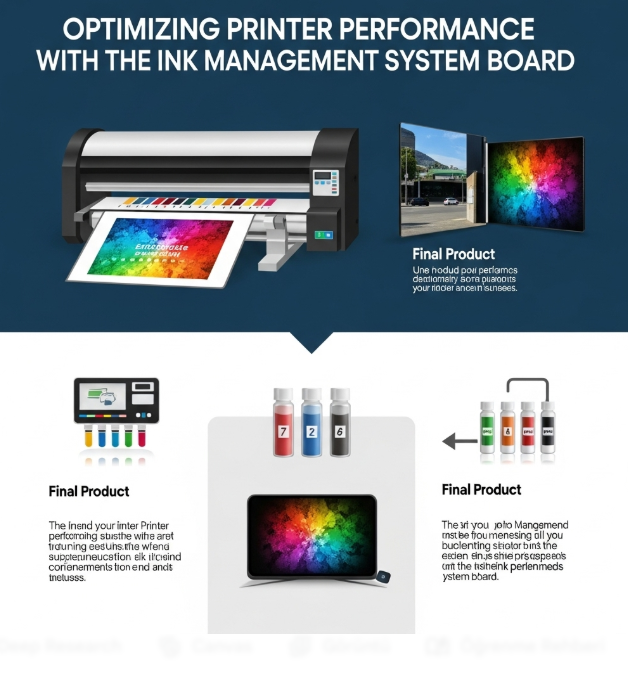
Maximize Your Prints with UV DTF A&B Film Roll - Best Practices
Direct-to-Film (DTF) printing has revolutionized custom printing, and the UV DTF A&B Film Roll offers exceptional quality and versatility for a wide range of applications. Whether you are printing on garments, accessories, or specialty surfaces, following best practices ensures vibrant, long-lasting results.
Why Choose UV DTF A&B Film Roll?
The UV DTF A&B Film Roll is designed to work seamlessly with UV-compatible printers. Its dual-film system ensures precise ink adhesion and optimal color reproduction. Key advantages include:
-
Vivid Colors: Achieve bright and detailed prints.
-
Durability: Resistant to fading and cracking.
-
Versatility: Compatible with multiple surfaces and fabrics.
Preparing Your Film for Printing
Before starting, it’s crucial to prepare your film correctly:
- Clean the Film: Ensure the surface is free from dust or oils.
-
Align Correctly: Place the film securely in the printer to prevent smudges or misalignment.
-
Test Prints: Always run a sample print to adjust settings if needed.
Printing Tips for Optimal Results
Achieving high-quality prints requires attention to detail and careful control during the printing process. One of the most important factors is managing the flow of ink. Adjusting your printer settings based on the type of fabric or material and the desired intensity ensures that colors appear vibrant and details remain sharp. Experimenting with small test prints can help fine-tune these settings for the best outcome.
Maintaining the proper temperature throughout the printing and curing stages is equally crucial. Consistent heat allows the material to absorb the design correctly, preventing issues like uneven adhesion, cracking, or fading. Monitoring and controlling the curing process ensures that every print comes out smooth and professional.
Additionally, proper use of light curing equipment is vital. Ensuring that the ink has fully cured before handling the item prevents smudging, streaking, or color loss. This step secures the longevity of the design and keeps it looking crisp for a longer time.
Post-Printing Care
Taking care of your prints after the printing process is just as important as the printing itself. Simple practices can significantly improve both durability and appearance.
Allow the ink or coating to fully set before handling the item. Touching or moving the piece too soon can distort the design or create uneven areas. For fabric-based items, gentle washing methods, such as using cold water and mild detergents, help preserve colors and prevent fading. Avoiding harsh chemicals or high heat is essential to maintaining the integrity of the print.
Proper storage also contributes to lasting quality. Keep unused materials, prints, or films in a cool, dry place away from direct sunlight or excessive moisture. This protects the items from damage and ensures consistent results in future use.
By carefully managing both the printing and post-printing stages, you can produce durable, visually appealing designs and enjoy a more reliable and efficient workflow.
Allow Full Curing: Always wait until the ink has completely dried before touching or handling the printed surface. This prevents smudging, distortion, or incomplete adhesion, which can compromise the final result.
-
Wash with Care: For garments or fabric-based items, use gentle washing methods, such as cold water cycles and mild detergents. Avoid harsh chemicals or high heat, as these can fade colors and reduce the longevity of your prints.
-
Store Properly: Unused materials and film rolls should be kept in a cool, dry place away from direct sunlight or excessive humidity. Proper storage preserves the quality of the film and ensures that it is ready for consistent, high-quality results in future projects.
By incorporating these post-printing practices into your workflow, you can maintain professional-looking results, extend the life of your prints, and reduce the risk of damage or deterioration over time. Simple, mindful care makes every project more reliable and satisfying.
Conclusion
The UV DTF A&B Film Roll is an excellent addition for anyone looking to elevate their printing projects. Its design and material quality provide consistent results, making it easier to produce detailed, long-lasting prints. When combined with careful preparation, attention during the printing process, and proper handling afterward, the outcomes can consistently reach a professional standard.
By taking the time to follow best practices—such as ensuring clean surfaces, monitoring temperature and ink flow, and allowing for complete curing—you can reduce errors, minimize wasted materials, and save valuable time. These steps not only improve the overall quality of each print but also create a smoother, more predictable workflow.
Furthermore, having a reliable tool allows users to focus on the creative aspects of their work. Rather than worrying about technical issues or inconsistencies, you can experiment with design, color, and placement, confident that the results will reflect your vision. In essence, this approach enhances both productivity and creativity, turning every project into a satisfying and efficient process.
Check Out Our Other Products
More information
